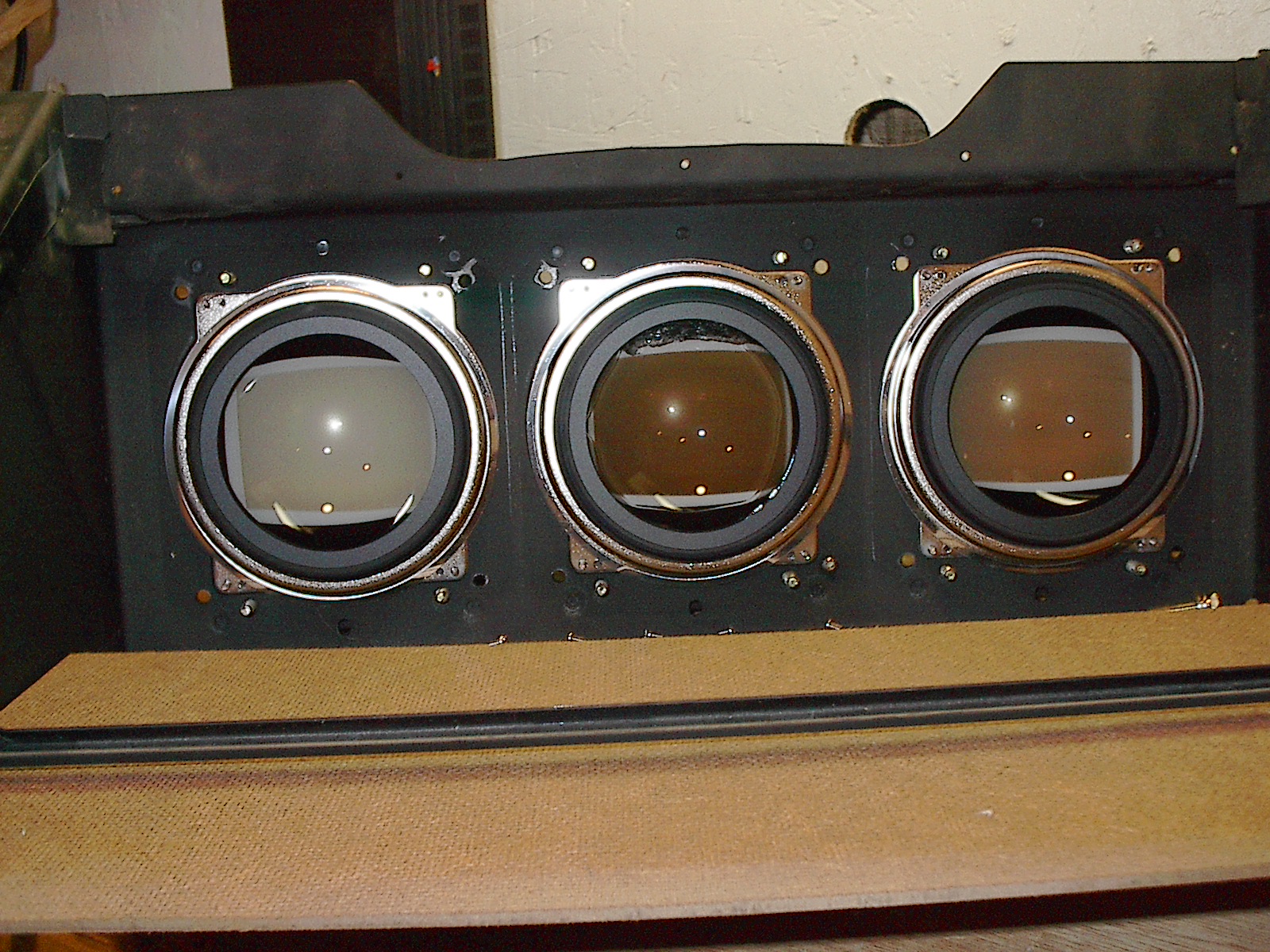What is with all the bad caps in Mitsubishi TV's? They are always leaking around the leads and smell like fish when heated with a soldering iron 
Weird thing is, they are almost always Nichicon VR or Rubycon YX?. Mainly the 47uf and 100uf ~50v value.
I've worked on about 10 different sets, between 27 and 50 inches that have the same leaky caps.
Another odd thing, is the ESR is good on many of the caps even though they are leaking black goo everywhere, and none were bulging.
The symptom is almost always that the set will turn on, then right back off. Soemtimes multiple tries and it will turn on. On some sets the vertical will be collapsed or folded over until it warms up.
It's too bad that they have this problem with leaky caps, because they seem to be one of the best TV's otherwise. Nice optics, all connectors labeled, sturdy cabinets etc. In fact I had a 32" projection set from 1987 that still worked perfectly, but the tubes were burned so bad it was unwatchable. in fact here's a pic of the tubes.

Weird thing is, they are almost always Nichicon VR or Rubycon YX?. Mainly the 47uf and 100uf ~50v value.
I've worked on about 10 different sets, between 27 and 50 inches that have the same leaky caps.
Another odd thing, is the ESR is good on many of the caps even though they are leaking black goo everywhere, and none were bulging.
The symptom is almost always that the set will turn on, then right back off. Soemtimes multiple tries and it will turn on. On some sets the vertical will be collapsed or folded over until it warms up.
It's too bad that they have this problem with leaky caps, because they seem to be one of the best TV's otherwise. Nice optics, all connectors labeled, sturdy cabinets etc. In fact I had a 32" projection set from 1987 that still worked perfectly, but the tubes were burned so bad it was unwatchable. in fact here's a pic of the tubes.
 .
.
 . I had to format the whole thing maybe that will teach them to get antivirus software and not to open stupid e-mail attachments
. I had to format the whole thing maybe that will teach them to get antivirus software and not to open stupid e-mail attachments  .
.
Comment